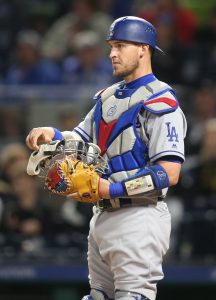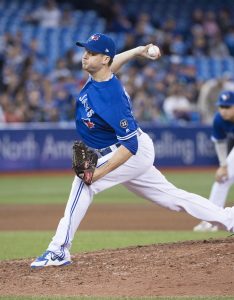Cubs president of baseball operations Theo Epstein held an interesting chat today with Waddle and Silvy of ESPN Chicago (audio link). He likened his desire to acquire a premium free agent to a second helping of dessert — of course, he wants it, but he just can’t have it — and says the organization still believes it can find improvement from its current roster. Epstein insists there’s positive energy within the friendly confines; despite the lack of roster activity, he says, the offseason has otherwise been a proactive one in which the entire organization has focused on hitting the ground running from the start of the present season. At the tail end of the talk, the veteran baseball executive also gives a detailed account of the organization’s stance on embattled shortstop Addison Russell. It’s well worth a listen, regardless of one’s general viewpoint on that subject.
Elsewhere in the division…
- The Brewers still have interest in bringing Wade Miley back to the organization, writes MLB.com’s Adam McCalvy in his latest inbox column, and Miley thoroughly enjoyed his time with the Milwaukee organization. However, Miley’s camp is still holding out for a multi-year deal, and the Brewers have a fairly large collection of arms from which to choose as it is. Jimmy Nelson, Jhoulys Chacin, Corbin Burnes, Brandon Woodruff, Freddy Peralta, Zach Davies, Chase Anderson, Junior Guerra and Adrian Houser are all options to start for Milwaukee. Given that depth, it seems that GM David Stearns is content to see if Miley’s price (or the price for any pitching target) comes down to a more palatable point.
- The Cardinals still don’t have a defined timeline regarding right-hander Alex Reyes’ return from shoulder surgery, writes Derrick Goold of the St. Louis Post-Dispatch. The prized 24-year-old prospect has been throwing recently, and president of baseball operations John Mozeliak tells Goold that Reyes is “long-tossing without limitation.” The expectation, per Mozeliak, is that Reyes will progress to mound work within the next two weeks. However, he’ll also have an “individualized build-up” in Spring Training, and his return to pitching in a game setting will be determined based on milestones within that personalized program. Reyes has long been touted as one of the game’s most promising arms, but he’s never reached 120 innings in any professional season. Given that he’s already had Tommy John surgery and now last year’s shoulder surgery, one can imagine the Cardinals will be particularly cautious in getting him back up to speed.


